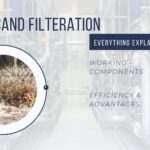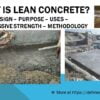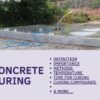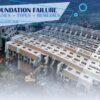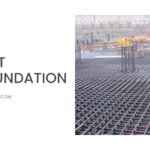FAB is an acronym of fly ash brick that is a special type of brick better than ordinary clay bricks. Masons use it to get high quality masonry work in building construction. It is known as high technology manufactured bricks. We use it as the replacement of red clay brick especially for environmental protection purpose. Fly ash brick are widely used in these days. Homeowners prefer these bricks over red clay bricks because of various advantages and environmental-friendly properties.
Fly ash bricks are best for conservation of natural resources as well as environment protection. Because of better properties than red clay bricks, these are use in non-load bearing internal or external walls of high-rise buildings.
Also Read: Types of Brick finishes – Brick Wall Texture
Constituents of Fly Ash Bricks
Important ingredients considered for manufacturing of fly ash bricks include.
- Fly ash which is considered as main ingredient the brick. It comprises 60% of brick ingredients.
- Sand or stone dust which is known as fine aggregate and comprises 25% of fly ash brick ingredients.
- Cement or Lime also use as ingredients for providing their relative properties and comprises 10% of fly ash brick ingredients.
- Lime is used in these brick for providing cementing properties.
- Gypsum is used in these bricks for providing and maintaining shape of brick. It comprises 5% of brick ingredients.
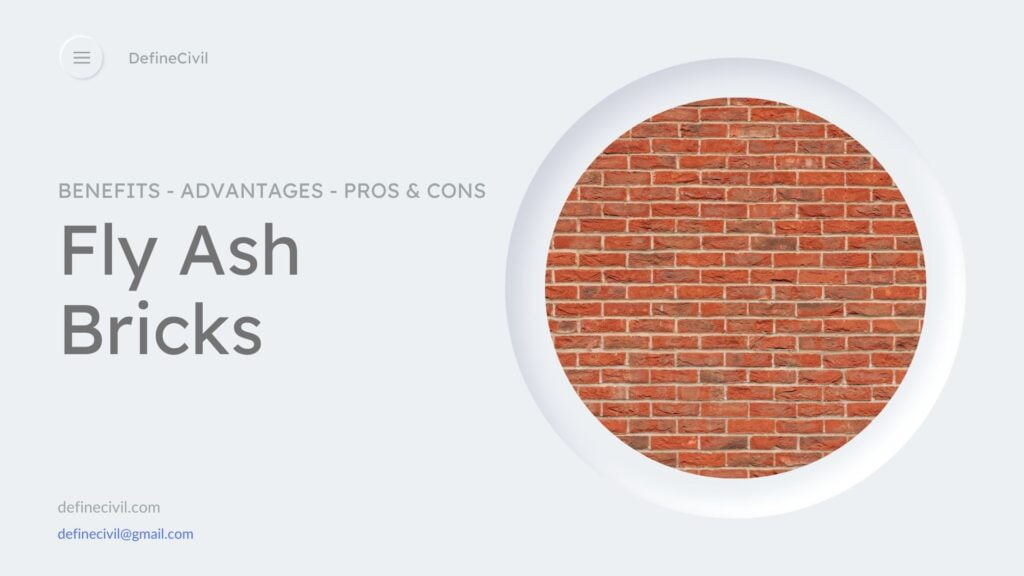
Also Read: Pointing in Brickwork – Types – Keyed Pointing – Tuck Pointing
Manufacturing
Fly-ash brick is manufactured from raw materials therefore it is known as eco-friendly bricks and effective for environment protection. Its manufacturing process includes the compressing of class C fly ash and water at pressure of about 4000 psi which is then cured at a temperature of 66 degrees Celsius. Air entertaining agents are also added for providing toughness to fly-ash bricks.
General Characteristics of Fly ash Bricks
- These bricks are available in sizes of 190mm x 90mm x 90mm and 40mm (L x W x H) for modular size.
- For non-modular size they are available in 230mm x 110mm x 70mm and 30mm.
- These bricks are manufactured and tested by following Indian Standard IS 12894-2002.
- Their average compressive strength is 7.5N/mm^2.
- Water absorption power of fly-ash brick is less than 8%.
- These bricks are uniform in shape, size, and color, and also free from any type of visible crack.
Also Read: Standard Brick Size – Brick Dimensions that you MUST Know
Properties of Fly-ash Bricks
Appearance
- These bricks have very attractive appearance because of their uniform shape, size, and color.
- This type of bricks has cement like color.
- Because of smooth appearance of fly-ash bricks they require 40% less mortar for plastering as compared to red clay bricks.
- Because of smoothness and uniform in size, plaster of Paris can be directly applied on them.
- These are free from organic matter and other harsh minerals.
Strength
- These bricks have high compressive strength compared to other bricks.
- Average compressive strength of these bricks is 7.5N/mm^2.
- Because of great strength they are effective for increasing strength of building.
- There are a smaller number of crack origination in fly-ash bricks.
- These bricks are considered effective for seismic design.
Also Read: Properties of Bricks – Compressive Strength -Hardness- Efflorescence
Durability
Fly-ash bricks are considered durable bricks because of following properties.
- These bricks are more durable as compared to other types of bricks.
- This type of brick has low permeability which is effective for increasing its durability.
- Efflorescence effect on fly-ash brick is very low.
- These bricks absorb less water and therefore prevent dampness in wall.
- These are strong acid resistant bricks.
Thermal Properties
These types of bricks are less thermal conductive and reflects light. Its thermal conductivity is considered as 0.9-1.05 W/mm^2. These bricks absorb less heat and consider good for summer environment.
Also Read: Different Shape Bricks (13 Shape Types I bet unknown to You)
Sound Insulation
These types of bricks have good degree of sound insulation as compared to other types of bricks.
Fire Resistant
These bricks have good fire-resistant property as compared to others one.
Sustainability
Main ingredients of these bricks is fly-ash which is raw material from thermal power plant therefore, this type of brick is considered as eco-friendly and environmental sustainable.
Advantages
This type of bricks considered following advantages:
- These bricks have high strength as compared to other types of bricks and it is considered that they have 48 MPa more compressive strength as compared to ordinary bricks.
- These bricks are considered as 28% lighter than ordinary bricks and thus considered as effective for reducing dead load of building.
- These are eco-friendly and environmental resistant bricks.
- These bricks are cost effective because they need 40% less mortar as compared to other ordinary bricks.
- Manufacturing cost of fly-ash brick is 20% less as compared to ordinary bricks.
Disadvantages of Fly-ash Bricks
Along with various advantages of fly-ash bricks, its disadvantages include:
- These bricks do not absorb heat therefore they are only suitable for subtropical areas where temperature is warm, because these bricks are not good for used in winter environment.
- Not all fly-ash bricks are good for use in building construction. Only high-quality fly-ash bricks are used.
- Because of smooth appearance and uniformity, they have poor bonding with concrete.
- These bricks have size limitations as cracks are developed in large size bricks.
- They required experienced labor for manufacturing. If it is not manufactured well, it will have negative effects on structure.
Uses of Fly-ash Bricks
- Fly-ash is used in the construction of load bearing exterior walls.
- These are used for construction of high-rise building.
- It is also used for construction of ware houses, factories, and power plants.
Comparison of Fly Ash Bricks vs Red Bricks
. Which brick is better fly ash or normal brick? Here’s how we can answer this question:
- The best thing about these bricks is the consistent shape. We cast these bricks in molds while the clay bricks can have kinks or differences in shape and size.
- Another pitfall of clay brick is that they are porous causing a lot of problems like seepage and deterioration. However, fly ash bricks are less porous but are still light in weight.
- A Fly Ash brick is environmental friendly because of the constituents and has greater strength.
- So, in all such aspects, we can say that fly ash bricks are better than ordinary clay bricks.


